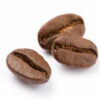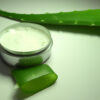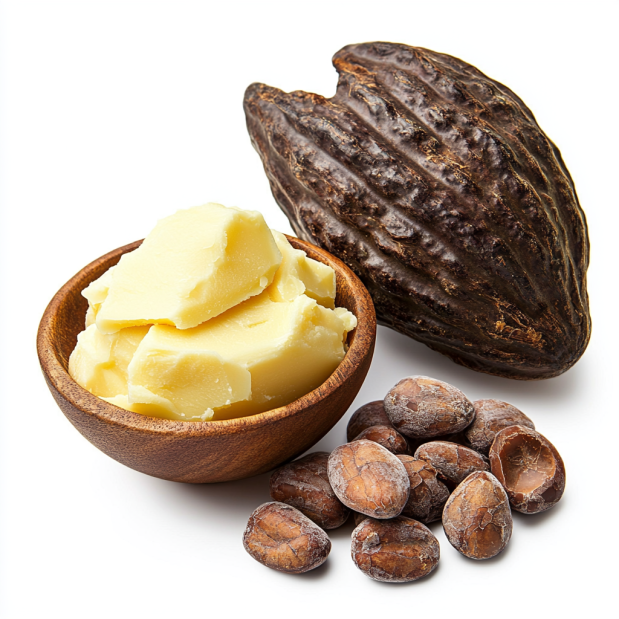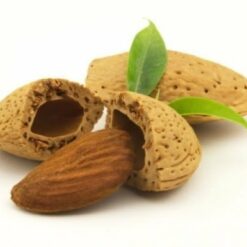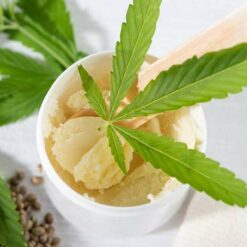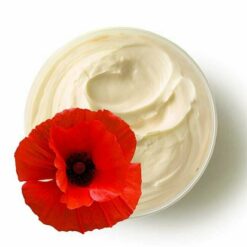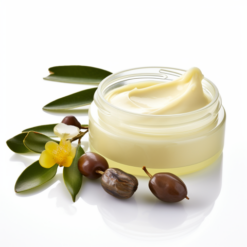Composition of Cocoa Butter
The butter contains saturated and unsaturated fatty acids, such as oleic, stearic, and palmitic acids, which make cocoa butter an excellent emollient with moisturizing and regenerating properties. Thanks to its high content of natural antioxidants, including polyphenols and vitamin E, it has strong antioxidant effects, delaying skin aging processes by neutralizing free radicals.
FATTY ACIDS COMPOSITION
| ACID NAME | C-CHAIN | RANGE (%) |
|---|---|---|
| PALMITIC | C16:0 | 23.0 – 30.0 |
| STEARIC | C18:0 | 30.0 – 37.0 |
| OLEIC | C18:1 | 31.0 – 39.0 |
| LINOLEIC | C18:2 | 1.5 – 4.5 |
Properties and applications:
In the cosmetic industry:
Regular use of cocoa butter increases skin elasticity, helps combat stretch marks and scars, evens out skin tone, and protects against moisture loss. As a cosmetic, it is recommended for dry, mature, and damaged skin, as well as for issues like AD, psoriasis, or epidermal cracks.
The butter has a natural UV filter (approx. SPF 4), providing gentle protection against sun radiation. It also works well as a product for relaxing massages, helping to reduce tension and stress.
It can also be used in hair care as a mask to provide smoothness, elasticity, and shine.
In the food industry:
Cocoa butter, thanks to its low melting point (30-35 °C), is ideal for chocolate production, giving it a rich flavor and creamy texture that easily melts in the mouth.
It is characterized by a very low free fatty acid content (0.5%), a low peroxide value (1.17 meq O2/kg), and minimal moisture (0.29%). Thus, it is a stable, durable vegetable fat resistant to rancidity for up to two years when properly stored in a dark and cool place.


